
LOW TEMPERATURE PHYSICS
Scope & Guideline
Advancing Knowledge in Cryogenic Science
Introduction
Aims and Scopes
- Superconductivity Research:
A central theme in the journal is the study of superconducting materials, including their properties, mechanisms, and applications in low-temperature environments. This includes investigations into high-temperature superconductors, hybrid structures, and the effects of impurities and external fields. - Quantum Phenomena in Low-Temperature Systems:
The journal covers quantum effects observed in various systems, such as ultracold gases, quantum dots, and superconducting circuits. This includes studies on quantum coherence, superfluidity, and quantum phase transitions. - Spectroscopic Techniques and Characterization:
Papers often focus on advanced spectroscopic methods such as infrared, Raman, and electronic spectroscopy to analyze materials at low temperatures. These techniques are crucial for understanding molecular and electronic interactions in condensed matter. - Material Science and Low-Temperature Effects:
Research on the physical properties of materials at low temperatures, including thermal conductivity, electrical resistivity, and magnetic susceptibility, is a significant area of interest. This research contributes to the development of new materials with tailored properties for various applications. - Theoretical Models and Computational Studies:
The journal publishes theoretical studies and computational models that help explain experimental observations in low-temperature physics. This includes developments in statistical mechanics, quantum field theory, and simulations of physical systems.
Trending and Emerging
- Topological Quantum States:
There is an increasing focus on topological phases of matter, including studies on topological insulators and superconductors. This trend reflects a broader interest in the exotic properties of materials that arise from their topological nature. - Nanostructured and Hybrid Materials:
Research into nanostructured materials and hybrid systems is gaining traction, particularly in the context of their unique properties at low temperatures. This includes studies on carbon nanotubes, graphene, and other nanomaterials. - Quantum Information and Computing:
The intersection of low-temperature physics with quantum information science is emerging as a significant area of research, with an emphasis on developing quantum computing technologies using superconducting qubits and other low-temperature systems. - Magneto-optical and Photonic Applications:
Studies exploring the magneto-optical properties of materials and their applications in photonics are on the rise. This trend highlights the integration of low-temperature physics with optical technologies.
Declining or Waning
- Classical Thermal Conductivity Studies:
Research focused on classical thermal conductivity measurements at low temperatures has become less frequent, possibly due to the shift towards more complex materials and systems where quantum effects dominate. - Traditional Superfluidity Studies:
While superfluidity remains a topic of interest, traditional studies on simple superfluid systems have waned as researchers explore more complex interactions and materials, such as those involving magnetic or topological phases. - Low-Temperature Magnetism in Simple Systems:
There has been a noticeable decrease in publications concerning low-temperature magnetism in simple magnetic materials, as research shifts towards more complex systems with novel magnetic interactions.
Similar Journals
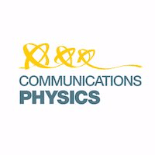
Communications Physics
Fostering dialogue among the brightest minds in physics.Communications Physics is a premier open access journal published by Nature Portfolio, dedicated to disseminating high-quality research in the field of Physics and Astronomy. Since its inception in 2018, the journal has rapidly established itself as a vital platform for innovative scientific communication, boasting an impressive Impact Factor and achieving Q1 status in the 2023 category of Physics and Astronomy (miscellaneous). With a Scopus rank of #31 out of 243, placing it within the 87th percentile, Communications Physics attracts a global audience of researchers, professionals, and students eager to engage with cutting-edge findings. The journal supports open access, ensuring that research is freely available to the public, which enhances its visibility and encourages broader discussions within the scientific community. Located in Berlin, Germany, Communications Physics aims to bridge the gap between various disciplines within physics, fostering interdisciplinary collaboration and inspiring future research endeavors.
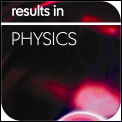
Results in Physics
Where Physics Meets Open Access ExcellenceResults in Physics, an esteemed open-access journal published by ELSEVIER, has been a prominent platform for disseminating cutting-edge research in the field of physics since its establishment in 2011. With its ISSN 2211-3797 and E-ISSN 2211-3797, this journal proudly holds a Q2 ranking in the Physics and Astronomy category for 2023, showcasing its significance and quality within the scientific community. With a remarkable Scopus rank of #28 out of 243 in the general physics and astronomy domain, placing it within the 88th percentile, Results in Physics serves as a vital resource for researchers, professionals, and students alike, fostering a collaborative environment for the advancement of knowledge across various subfields. The journal aims to provide a rapid and unrestricted access to innovative findings, encouraging open scientific dialogue and enhancing the visibility of breakthrough research. Located in the Netherlands at RADARWEG 29, 1043 NX AMSTERDAM, Results in Physics continues to uphold its commitment to excellence and accessibility in the ever-evolving landscape of physics research.
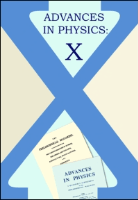
Advances in Physics-X
Empowering Knowledge through Open AccessAdvances in Physics-X is a premier open-access journal published by Taylor & Francis Ltd, dedicated to advancing the frontiers of knowledge in the field of Physics and Astronomy. Since its inception in 2016, the journal has established itself as a vital platform for researchers and professionals, showcasing innovative research and cutting-edge theories that influence a broad array of sub-disciplines within physics. With an impressive impact factor and ranked in the 94th percentile among its peers, it resides in the Q1 category for Physics and Astronomy (miscellaneous), indicating its significant contributions to the academic community. Located in the United Kingdom, the journal encourages open access to foster wider dissemination and visibility of scholarly works, aligning with contemporary academic trends that prioritize global knowledge sharing. The ongoing commitment to publishing high-quality research ensures that Advances in Physics-X remains an essential resource for students, industry experts, and academics alike, helping to shape the future of physics research through collaboration and innovation.

INTERNATIONAL JOURNAL OF MODERN PHYSICS A
Advancing the frontiers of modern physics.INTERNATIONAL JOURNAL OF MODERN PHYSICS A, published by WORLD SCIENTIFIC PUBL CO PTE LTD, stands as a pivotal platform in advancing the frontiers of research within the fields of Astronomy and Astrophysics, Atomic and Molecular Physics, and Nuclear and High Energy Physics. Established in 1989, this journal has systematically contributed to the scientific community, with a demonstrated impact as indicated by its Q2 category rankings across these critical disciplines in 2023. Researchers and professionals are encouraged to engage with its rigorous peer-reviewed content, fostering a deeper understanding of modern physics theories and experimental breakthroughs. Although the journal operates under a conventional access model, it remains a vital resource for those seeking to disseminate their findings and stay abreast of cutting-edge developments. With an emphasis on quality and breadth of research, the journal continues to attract submissions from leading physicists and scholars, enhancing its reputation as a key academic resource.
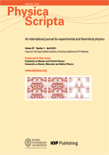
PHYSICA SCRIPTA
Fostering Collaboration for a Brighter Scientific FuturePHYSICA SCRIPTA, established in 1970 and published by IOP Publishing Ltd, is a prestigious journal dedicated to the broad fields of physics, encompassing topics such as atomic and molecular physics, condensed matter physics, and mathematical physics. With an impressive commitment to advancing scientific knowledge, it holds a significant standing in the academic community, evidenced by its Q2 and Q3 rankings across various categories in 2023. The journal is instrumental for researchers, professionals, and students seeking to disseminate and engage with high-quality research, fostering collaboration and innovation within the field. Although it currently does not offer open access options, its robust editorial standards ensure the dissemination of impactful studies, contributing to its rising citation metrics. Published from the United Kingdom, PHYSICA SCRIPTA continues to be a vital resource for contemporary developments in physics, paving the way for future discoveries.

JOURNAL OF EXPERIMENTAL AND THEORETICAL PHYSICS
Pioneering Research at the Intersection of Theory and PracticeJournal of Experimental and Theoretical Physics is a distinguished publication in the field of physics, dedicated to disseminating pioneering research and fostering intellectual discourse in both experimental and theoretical domains. Published by Pleiades Publishing Inc, this journal has established itself as a crucial platform for physicists, with a commendable Q3 categorization in the 2023 rankings within Physics and Astronomy, illustrating its impactful contributions to the discipline. The journal features a wide array of articles that delve into the intricacies of physical theory, experimental techniques, and applications, making it an invaluable resource for researchers, professionals, and students alike. Although it operates under a traditional access model, its longstanding history, dating back to 1980 and converging years through to 2023, underscores its commitment to advancing the frontiers of physics knowledge. The journal is also notable for its engagement in the scientific community, aiming to bridge the gap between theoretical predictions and experimental validations. As a part of Pleiades Publishing, it continues to uphold rigorous standards of academic excellence, inviting contributions that push the boundaries of current understanding and stimulate further exploration in the fascinating world of physics.

JOURNAL OF LOW TEMPERATURE PHYSICS
Advancing knowledge in condensed matter and materials science.Journal of Low Temperature Physics, published by Springer/Plenum Publishers, is a prominent academic journal dedicated to the fields of low temperature physics, condensed matter physics, and materials science. With a rich history dating back to its inception in 1969, this journal has served as a critical platform for disseminating innovative research and advancements in atomic, molecular, and condensed matter physics. As of 2023, it holds a Q3 rank in various categories, including Atomic and Molecular Physics, Condensed Matter Physics, and Materials Science, reflecting its significant contribution to the scientific community. While currently not open access, the journal is indexed in leading databases, making it accessible to a global audience. Researchers, professionals, and students will find valuable insights and peer-reviewed studies that push the boundaries of low temperature experimental and theoretical physics. For comprehensive discussions that bridge theory and application, Journal of Low Temperature Physics stands out as an essential resource in the pursuit of scientific excellence.

JETP LETTERS
Pioneering Research, Inspiring InnovationJETP LETTERS, published by MAIK NAUKA/INTERPERIODICA/SPRINGER, is a prestigious journal in the field of physics and astronomy, which plays a pivotal role in disseminating groundbreaking research and innovative ideas since its inception in 1969. With an ISSN of 0021-3640 and an E-ISSN of 1090-6487, this journal aligns well with the interests of both seasoned researchers and emerging scholars, having achieved a 2023 category rank of Q3 for miscellaneous topics within physics and astronomy. Located in the United States at 233 SPRING ST, NEW YORK, NY 10013-1578, JETP LETTERS serves as a critical resource for its readership, offering exclusive insights and advancements across diverse areas of physics. While not open access, it hosts a collection of articles that refine theoretical approaches and experimental methods, providing both knowledge and inspiration to professionals and academics seeking to make impactful contributions to the scientific community. The journal’s quality is reflected in its Scopus ranking, where it stands at 39 out of 81 in the multidisciplinary category, placing it in the 52nd percentile, thus underscoring its significance and reliability as a scholarly outlet.

Condensed Matter
Advancing Knowledge in Condensed Matter PhysicsCondensed Matter is a leading open-access journal dedicated to the diverse and dynamic field of condensed matter physics, published by MDPI since 2016. With its base in Switzerland, the journal aims to present a platform for researchers and professionals to share innovative findings and advancements in areas such as electronic, optical, and magnetic materials. As of 2023, it is ranked in the Q3 category for both condensed matter physics and electronic, optical, and magnetic materials, a testament to its relevance and growth within the scientific community. Researchers will find valuable insights through its accessible format, fostering collaboration and knowledge dissemination within this interdisciplinary field. With a commitment to enhancing the global dialogue in condensed matter studies, Condensed Matter invites contributions that explore theoretical and experimental approaches, thus pushing the boundaries of understanding in this crucial area of science.
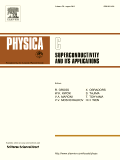
PHYSICA C-SUPERCONDUCTIVITY AND ITS APPLICATIONS
Advancing Knowledge in Superconductivity ApplicationsPHYSICA C-SUPERCONDUCTIVITY AND ITS APPLICATIONS, published by Elsevier, stands as a pivotal journal in the fields of Condensed Matter Physics, Electrical and Electronic Engineering, and Energy Engineering. With its inception dating back to 1988, the journal has successfully established itself as a key platform for disseminating high-quality research and innovative applications related to superconductivity and its diverse technological implications. Although it currently does not offer open access options, the journal maintains a respectable Q3 quartile ranking in multiple categories as of 2023, indicating its continued relevance and impact within the academic community. Researchers, professionals, and students alike benefit from its insights, as it features peer-reviewed articles covering the latest advancements and theoretical breakthroughs in superconductivity. As it converges towards the end of its operational span in 2024, this journal continues to stimulate valuable dialogue and foster collaborations that push the frontiers of knowledge in this exciting and rapidly evolving domain.